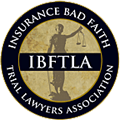What Is Res Ipsa Loquitur?
California’s civil justice system centers on the legal doctrine of negligence. Negligence, or preventable breach of duty, can cause serious harm to another person. If so, the injured victim can seek compensation for injuries and losses under California’s personal injury laws. Before a court will grant a compensatory award, however, the injured victim (plaintiff) must prove the elements of negligence. Res ipsa loquitur is a legal theory that could allow a victim to prove liability through a presumption of negligence rather than actual negligence.
What Is Negligence?
Before you can understand the theory of res ipsa loquitur, you must learn the basics of negligence. Negligence is the failure to fulfill the accepted standards of care or exercise a reasonable degree of care for the situation. To prove negligence during an injury claim, you or your attorney must establish clear and convincing evidence proving four main elements as more likely to be true than not true.
- The defendant owed you a specific duty of care.
- The defendant committed an act or omission that went against the duty of care.
- The breach of duty of care caused your injuries.
- As a result, you suffered compensable damages.
Duty, dereliction of duty, direct cause and damages are the four Ds of a personal injury claim in California. For the most part, a plaintiff cannot recover compensation unless he or she proves the defendant’s liability by establishing actual negligence. It is possible, however, for a victim to rely on the legal theory of res ipsa loquitur instead. This could make it easier to prove a defendant’s liability.
What Is the Legal Doctrine of Res Ipsa Loquitur?
Res ipsa loquitur is Latin for “the thing speaks for itself.” When used in civil law, the doctrine of res ipsa loquitur dismisses a plaintiff from having to prove actual negligence. Instead, it will be enough for the plaintiff to prove a presumption of negligence based on circumstantial evidence. Circumstantial evidence means to infer that a fact exists, such as the fact that two cars collided. It differs from direct evidence, which includes photographs and eyewitness testimony. Circumstantial evidence points to a logical conclusion but does not establish a fact.
Using res ipsa loquitur during a personal injury claim means you are attempting to prove a defendant’s negligence without any direct evidence. It is possible if there is enough circumstantial evidence to support your claim. To establish an injury case based on res ipsa loquitur, you or your lawyer will need to prove three key elements.
- You did not contribute to your own accident or injuries.
- Something within the defendant’s control is what caused your injury.
- The accident is not something that would typically occur without someone’s negligence.
An example of res ipsa loquitur in action is an injury claim for a loose brick that fell out of a wall and struck a victim. The circumstantial evidence would assert that the brick would not have fallen out of the wall were it not for poor building construction or maintenance, even though there might not have been any eyewitnesses who saw it fall. This circumstantial evidence might be enough to bring a claim against the building’s owner for liability for the injury. If reasonable inference holds that no other plausible explanation exists for how the accident occurred, the defendant may be liable without any direct evidence of negligence.
Talk to a Personal Injury Attorney About Your Case
Contact a lawyer about your potential personal injury case in Sacramento, even if you do not have any direct evidence of a defendant’s negligence. You may still have grounds for a case based on the legal doctrine of res ipsa loquitur. A lawyer can help you establish your case, refute the defendant’s arguments and prove liability.

















